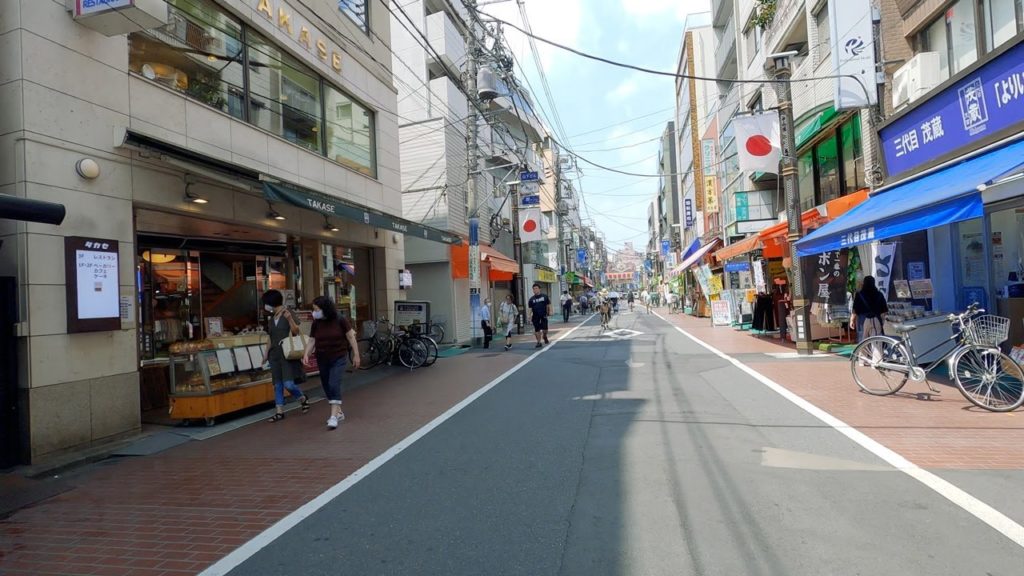Thank you for watching! We publish videos from Japan.
If you like our videos, please consider subscribing to our channel.
Youtube:
We are also on Twitter and Instagram:
Twitter:
Instagram:
00:00 Kasuga-dori Ave., Hongo, Bunkyo-ku, Tokyo
00:56 Hakusan-dori Ave.
08:07 Sugamo Jizo-dori Shopping Street
18:22 Nakasendo Ave., Itabashi, Itabashi-ku
21:20 Toshimabyoin-dori
23:52 Fukujizoson-dori
25:14 Kawagoe-kaido, Nakacho, Itabashi-ku
38:26 Shinobazu-dori, Honkomagome, Bunkyo-ku
41:02 Sendagi, Bunkyo-ku
46:21 Ueno Green Club (Bonsai Shop), Uenokoen, Taito-ku
Hongō (本郷) is a district of Tokyo located in Bunkyō, due north of the Tokyo Imperial Palace and west of Ueno.
Hongō is home to the University of Tokyo, Juntendo and Toyo Gakuen Universities. There are many schools and universities in this ward and it has been regarded as a school zone since Meiji era.
(Wikipedia)
Sugamo Jizo-dori Shopping Street
This friendly town in Tokyo’s north is often dubbed “Harajuku for Grandmas”, for its bustling shopping streets favored by the over-60 crowd. It’s a great place to connect with locals and soak up Tokyo’s downtown atmosphere of old. Of course, you don’t have to be a grandma to enjoy the traditional snacks like sweet and salty shiodaifuku or peruse the traditional crafts for sale. Don’t forget to buy some lucky red underwear and visit Kouganji Temple to heal what ails you.
Jizo-dori Shopping Street is the heart of the action in Sugamo. Lined with retro shops and street vendors selling crafts, snacks and souvenirs at low prices, cheerful shopkeepers call out to customers and offer food samples. The Toden Arakawa tram passes through, adding to the bygone feeling. Red is a color of luck and longevity in Japan, making it popular for babies and seniors; turning 60 is a chance to start over like a baby—and the traditional birthday gift is red clothing. Maruji is a famous purveyor of red underwear, along with T-shirts, scarves and socks, so you can get a little extra color and luck.
Around the center of Jizo-dori Shopping Street, Kouganji Temple was founded in 1596 and renowned for the powerful “Togenuki Jizo” statue. It is said a samurai’s wife was cured of illness miraculously. Elderly visitors flock to wash the Arai Kannon statue in front of the temple, in hopes of healing their own ailments. For a quieter form of healing, visit the beautiful Rikugien Gardens in nearby Komagome. Built around 1700, the gardens reproduce 88 scenes from famous poems. Take time to stroll around the man-made lake, traversed by wooden bridges and dotted with teahouses. In spring and autumn, the gardens are illuminated at night to make the most of the seasonal colors.
The Ueno Green Club is located at the west part of Ueno Park in Tokyo and you can see and buy various bonsai in there.
Ueno Park is at the heart of the Ueno area, which is part of Tokyo’s “shitamachi”—literally “downtown,” but more like “old heart of town.” Ueno Park’s history begins in 1873, at the beginning of the Meiji Era, when it was established as one of Japan’s first public parks. In 1924, Emperor Taisho officially passed the administration of the park to the city, giving the park its official name: Ueno Onshi Park (“onshi” means “imperial gift”). Its long history both as a seat of a culture and as a “people’s park” has created a very special mix of elegance and fun.
The list of things to do in Ueno Park is long, and includes Ueno Zoo and a host of incredible museums.
There is no admission fee to enter Ueno Park, but the various facilities have modest admissions fees (many are around 600 yen). Most museums and other facilities open at 9:00 or 9:30 and close between 16:00 and 17:30, and most are closed completely on Mondays. The hours of the park itself are 5:00 to 23:00.
Go to Ueno Station and take the Ueno Park Exit. Ueno Station is a stop on the JR Yamanote Line, which loops around central Tokyo, as well as the terminus for several train lines, including some Shinkansen bullet trains. The park will be just across the street. The park is also close Tokyo Metro Ginza Line and Hibiya Line Ueno Station, Uguisudani Station on the JR Yamanote Line, and Keisei Ueno Station on the Keisei Line.
Filming Date: August 18th, 2020
#TokyoSmith #japantravel #drive


AloJapan.com